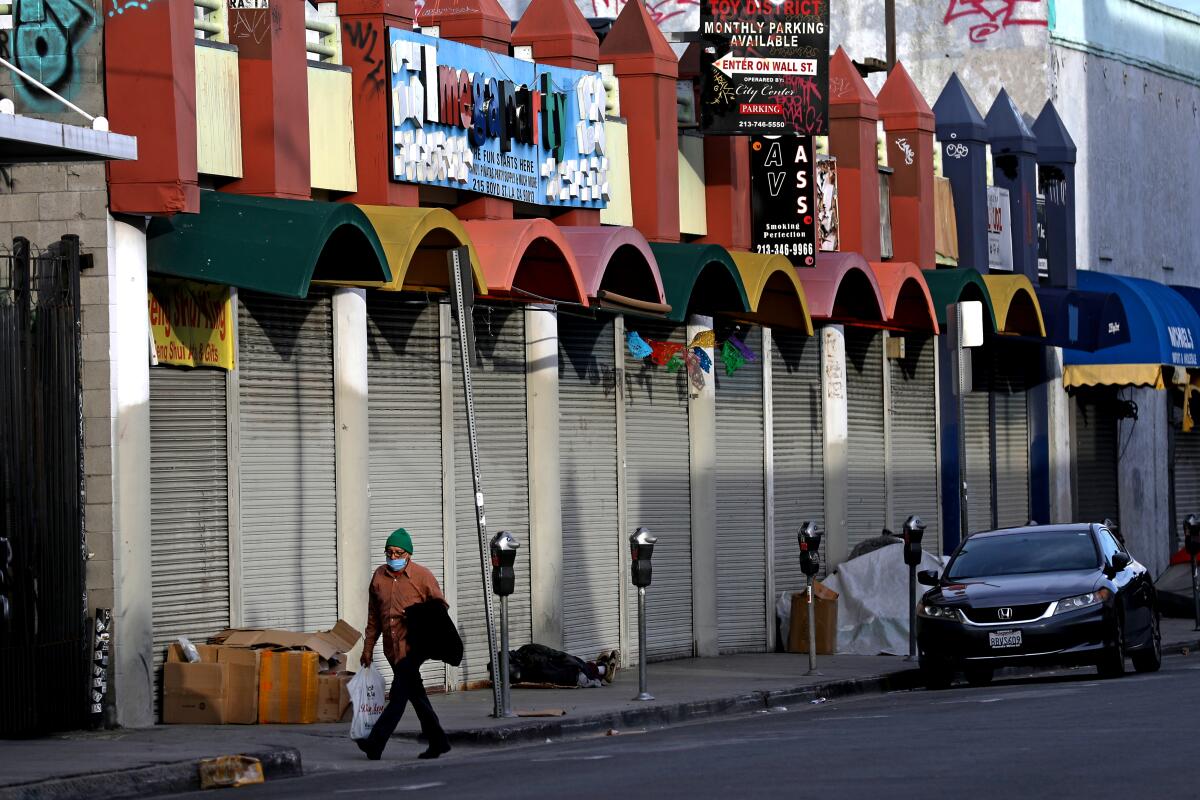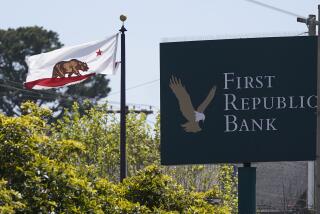Op-Ed: Millions of small businesses are about to collapse. We can’t afford the mistakes we made in 2008

The last time America suffered an economic meltdown in 2008 we came out of it poorly.
Yes, the economy and the stock market recovered. So did the banks, with a big assist from Uncle Sam. But millions of homeowners were left with mortgage debts that squeezed their disposable incomes to the vanishing point.
The unshared recovery proved a downer in two ways. First, the recovery was unusually sluggish. Secondly, it gave rise to simmering class resentments. Arguably, it led to the election of Donald Trump.
How can we avoid a similar shock this time?
Every depression is distinct, but I’d argue that the victims of the COVID-19 depression — this year’s version of households drowning in mortgage debt — are America’s small businesses. This time, the economist Ken Rogoff says, “The small businesses are getting slaughtered.”
A decade ago, the subprime crisis blew up the entire economy. This time, the shock to small business has led to a vicious multiplier effect: Those shuttered hair salons aren’t ordering supplies or investing in new hair dryers.
The federal government recently enacted a small business rescue package in the CARES Act. But it’s already exhausted and beset with bureaucratic problems. By contrast, the Federal Reserve’s emergency measures such as buying debt have immediately propped up large corporations.
Government aid aside, larger firms are naturally better suited to weathering the storm. Larger companies can tap capital markets, which are used to translating future prospects into current dollars. Even if McDonald’s isn’t selling as many hamburgers today as it did before, investors know that eventually its business will recover.
Small businesses, however, are on their own. The corner pizzeria cannot borrow against the future, because by the time the recovery arrives it may not exist.
There are some 30 million such businesses in the U.S. (41,000 do sell pizza). Most are tiny, but cumulatively they employ 60 million people.
Since these firms account for 44% of the gross domestic product, to lose even a sizable fraction would be an economic catastrophe. Millions of employees would lose their jobs. Thousands of ideas would go up in smoke. Small business is the laboratory for big ideas.
The cultural fallout would be just as serious. If every coffee shop were rebranded a Starbucks, the caffeine would still be there, but it wouldn’t taste the same or feel the same.
Reports from the tapestry of small business around the country — a grocer in New Orleans, newspapers from Oregon to West Virginia, an art gallery in my home city of Boston — suggest that small businesses everywhere are fighting for their lives. In Camden, Me., the lone bookstore shut its doors for good.
Each of these businesses represents the savings, the sweat and the dreams of an entrepreneur or family. On average, their proprietors earn only about $50,000 a year. But they symbolize something larger — call it the dream of plausible opportunity.
Part of that dream got destroyed or badly damaged in the mortgage crisis. But we don’t have to repeat the mistakes of 2008.
As part of the $2.2-trillion CARES legislation, Congress authorized $349 billion in federally guaranteed loans for firms with fewer than 500 employees. Importantly, firms that retain their pre-crisis payroll for workers will have these loans forgiven.
This is a big improvement from 2008, when neither regulators nor Congress was willing to endorse a full-scale bailout for mortgage owners. The fear then was that undeserving homeowners would benefit. And it was true: If you want to help a lot of people in a hurry, fraud and waste will be a cost of doing business.
The same trade-off is true today. The good news is that Congress, recognizing the scale of this crisis, was willing to allocate much more money so that small business borrowers would emerge from the crisis with healthy balance sheets.
But in its eagerness to build in safeguards, it wrapped the program in red tape. Businesses had to apply for the loans through banks. The banks have been uncertain about the criteria to qualify for the federal guarantee, which has gummed the works.
Many of the smallest businesses did not apply because they didn’t have working relationships with banks beyond making their weekly cash deposits. Some opted out because the criteria for loan forgiveness was unclear and they don’t want to get stuck with the debt.
Moreover, the loans only cover eight weeks of payroll plus limited expenses for rent and utilities. Many firms need assistance for more than eight weeks. What happens if after eight weeks a company has to lay off staff? Will the loan still be forgiven?
Confusion and frustration bedevil attempts to keep employees on the job while getting a Payroll Protection Program loan.
Worst of all, the program is far too small. The Trump administration announced on Thursday that the entire fund was committed. (Due to red tape, only a fraction of the money has been disbursed.) It took fewer than two million businesses out of 30 million nationwide to claim all of the money.
Congress is considering expanding the loan program by adding another $250 billion. It needs to add even more since that amount will also fall short. And it needs to move fast to get money to the most desperate businesses before they fail.
For the smallest businesses — those with a dozen or fewer employees — a non-bank funding mechanism is needed. Banks gave priority to pre-existing clients, and they processed larger applications first. That left out many of the most desperate firms. Amanda Ballantyne, director of the Main Street Alliance, an advocacy group, suggests giving the smallest businesses direct grants from the Treasury.
The program needs more funds and at least a partial redesign. In 2008, many homeowners did share the blame for borrowing beyond their means. Even then, the fallout from letting so many fail was catastrophic. This time, small businesses are completely blameless.
Sheila Bair, former head of Federal Deposit Insurance Corp., who pushed hard for more help for homeowners in 2008, told me, “One lesson from the last crash is that saving Wall Street doesn’t save Main Street.”
We shouldn’t make the same mistake again.
Roger Lowenstein is the author, most recently, of “America’s Bank: The Epic Struggle to Create the Federal Reserve.”
More to Read
A cure for the common opinion
Get thought-provoking perspectives with our weekly newsletter.
You may occasionally receive promotional content from the Los Angeles Times.











